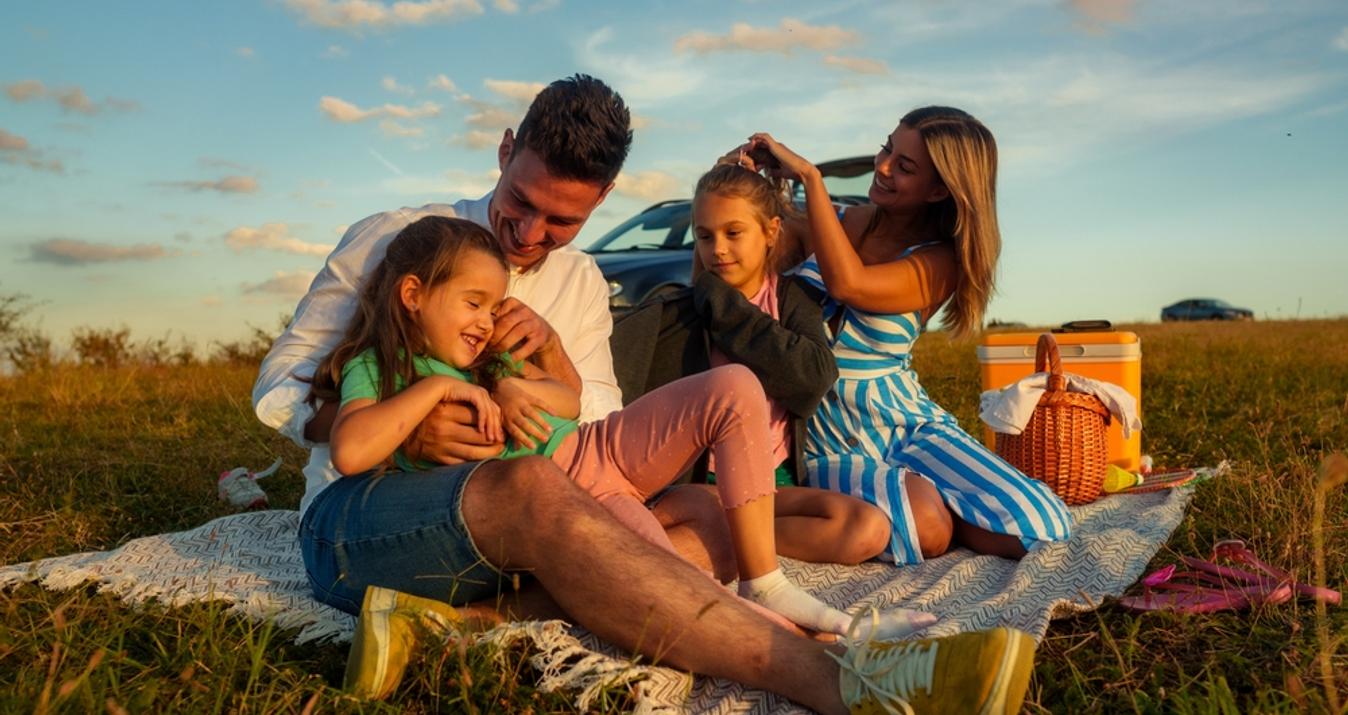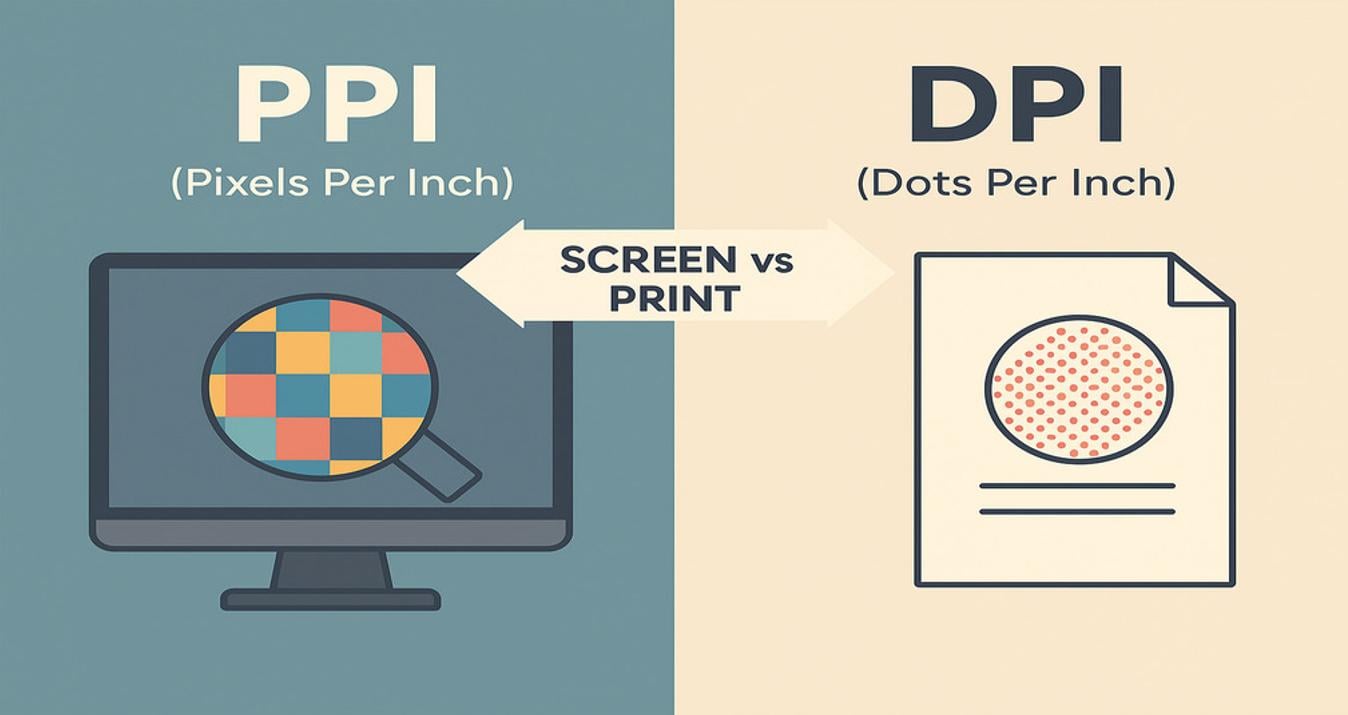How To Photograph Concerts: Photographers Guide
Last Updated on April 17, 2025
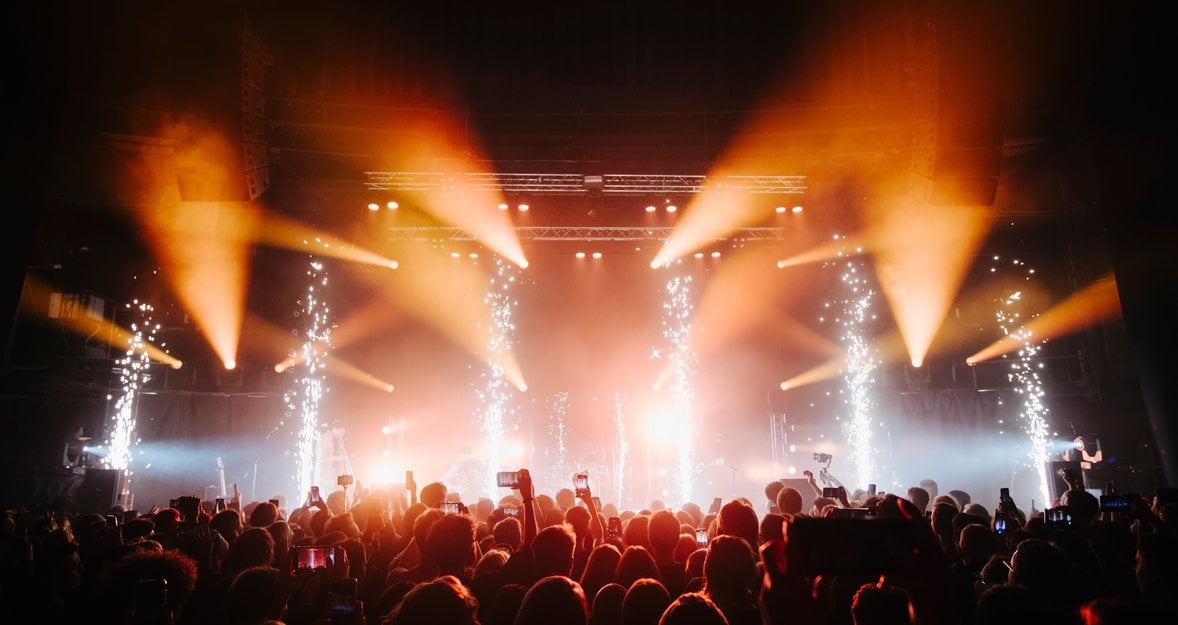
Learn how to break into concert photography! Discover essential gear, shooting techniques, and tips for building a portfolio and turning your passion into profit.
Capturing music through photographic mastery is both exciting and challenging. The performer's movements, the darkness and spotlights, and the crowds of people at performances all require special skills. If you're wondering how to get into concert photography, you'll need the right equipment, technique, and access to concerts.
Read about building a professional portfolio of show work, additional tools for taking photos, and ways to make money in this craft. The guide will immerse you in the world of images and teach you how to turn short scenes into compelling visual narratives.
How Do You Become a Concert Photographer: Step-by-Step Guide
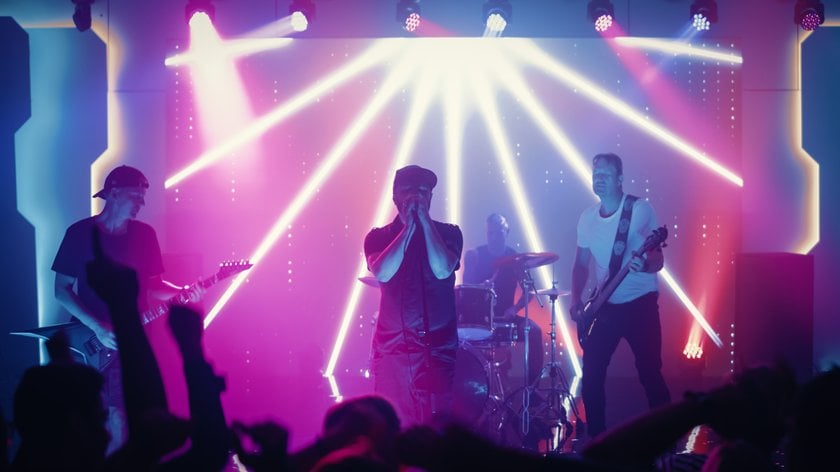
Becoming a real estate agent requires skill, perseverance, and connections. If you are wondering how to become a concert photographer, follow these steps:
Learn how to shoot in low-light conditions. Non-standard lighting conditions characterize concerts. Switch to manual and control the ISO, shutter speed, and aperture for sharp images in low light.
Post your best shots on major platforms. They should be in digital format on professional sites with Instagram for portfolio development. Exhibit different photographic aspects such as close-up shots and close-ups of the performers and facial expressions of the audience.
Offer free photo shoots as a promotional service for emerging talent. Promoters and venues can have an opportunity to participate by showing them your worth.
Get a media pass. This can be done through online publications or directly with event management.
Master editing skills. Professional photo post-processing will make your work unique and of better quality.
Following these tips will accelerate your entry into the industry and provide work opportunities. Stick to photo shoots with constant communication and persistent effort.
How Do You Photograph Concerts — Actual Concert Photography Tips
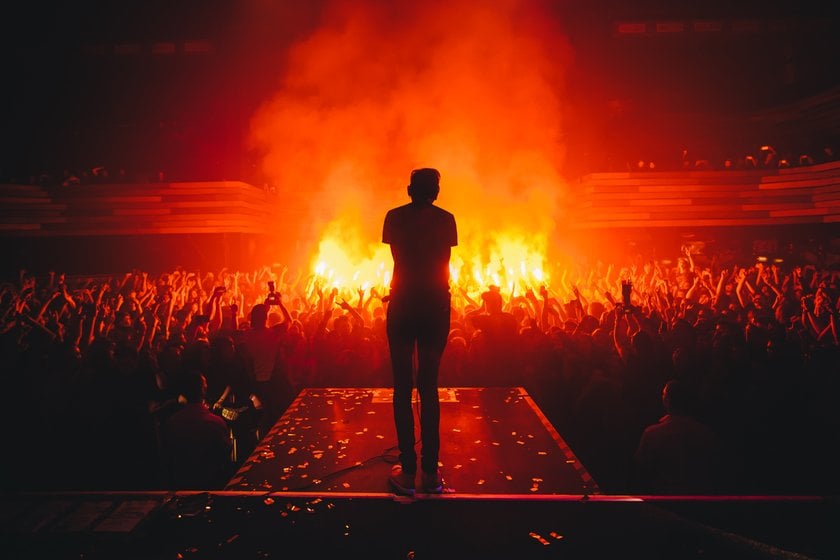
Professional photographers encounter multiple challenges during concerts, including rapid subject motion, unstable lighting conditions, and limited photographer access. The following instructions provide essential steps for capturing remarkable live music photographs.
Camera Settings for Concert Photography
Light levels lower than normal require a camera lens with high speed capability. A prime lens featuring an f/1.8 or lower aperture setting enables better camera performance by allowing higher light intake. Operate the camera in manual mode to achieve complete exposure management. The Camera settings should begin with ISO 1600-3200, f/2.8 aperture, and at least 1/200s shutter speed to stop-motion. Using flash is forbidden in venues because it can violate rules and destroy the musical ambiance.
Composition & Framing Techniques
In live music photography, capturing an artist’s facial expressions adds emotion and energy. A singer mid-chorus or a guitarist in action makes the shot more compelling. Low-angle shots create a powerful presence, while side-stage views highlight band interactions.
Stage elements enhance composition — microphones, instruments, and lighting add depth. Backlit performers create dramatic silhouettes, and colored stage lights set the mood. Framing with drum kits or amplifiers adds layers, making images more immersive. Fast-paced show settings, adaptability. Move strategically, respect the crowd, and use composition to bring the live experience to life.
Exclusive Tools of Endless Possibilities in One AI Editor
Explore Now!Working within the restrictions of the venue
Most large concerts have a three song rule, so photographers are only authorized to work on them. The goal of scheduling shoots in advance results in the highest possible productivity. Photographers must follow safety and seating rules while maintaining a quiet and peaceful environment as may be required by venue rules. Mastering these concert photography tips takes practice, but with the right approach, you’ll capture powerful, dynamic images that truly reflect the energy of live music.
Best Camera Gear for Music Photography

Choosing the right gear is essential for anyone learning to be a concert photographer. The requirements for images include high sensitivity (ISO 6400 and lower noise), fast autofocus speed, and an 8 frames-per-second burst mode. Unexpected stage lighting and quick performer movement. Photographers who shoot music prefer mirrorless cameras such as the Canon EOS R6, Sony A7 IV, and Nikon Z6 II because these devices deliver outstanding range in addition to dependable focus systems.
A camera requires proper lenses to handle effectively. The 35 mm f/1.4 or the 50 mm f/1.8 produce clear close-up shots, yet the versatile 24-70 mm f/2.8 zoom lens serves wide and mid-range needs. Equipment for distant performer shots consists of a 70-200 mm f/2.8 telephoto lens. Images remain sharp during slow shutter speeds because image stabilization systems provided as either in-lens (OIS) or in-camera (IBIS) features help photographers maintain image stability.
Latext, a monopod acts as a stability tool in dim lighting environments and dual memory card slots safeguard data from accidental corruption. The RAW file format provides the best post-processing capabilities, so photographers should use it specifically for dealing with highlights and shadows under stage lighting conditions.
Comparison Table: Camera Gear for Concert Photography
Feature | Best Option | Budget Option | Why It’s Important |
Camera Body | Sony A7 IV | Canon EOS RP | Handles low light, fast autofocus |
Fast Prime Lens | 35 mm f/1.4 | 50 mm f/1.8 | Great for close-ups, sharp focus |
Zoom Lens | 24-70 mm f/2.8 | 28-75 mm f/2.8 | Versatile for different shots |
Telephoto Lens | 70-200 mm f/2.8 | 85 mm f/1.8 | Ideal for distant stage shots |
Stabilization Gear | Monopod, IBIS | None | Helps with low-light stability |
Having the right setup is fundamental to excelling in music photography. Investing in high-quality gear makes a noticeable difference in capturing sharp, well-lit images, even in the most difficult lighting.
How to Build a Concert Photography Portfolio
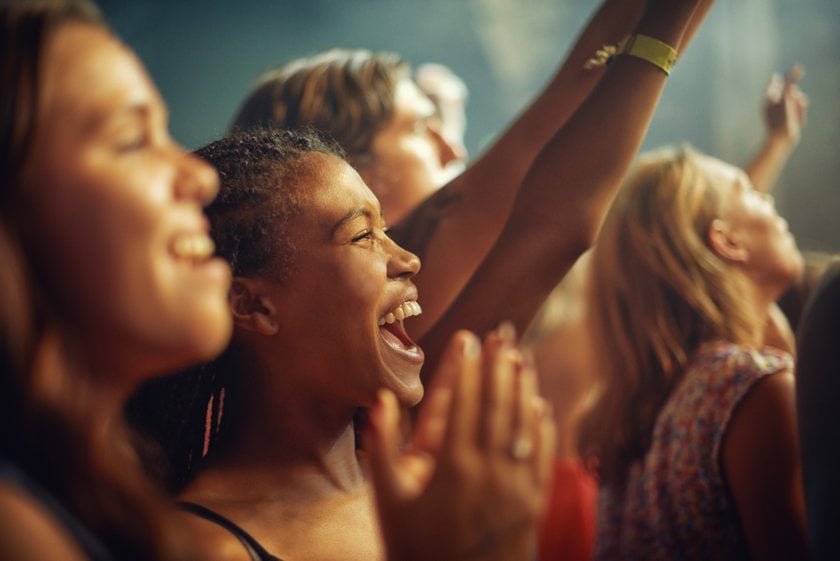
Creating a strong concert photography portfolio is essential for attracting clients and landing gigs. To create an outstanding portfolio that displays your abilities, follow this procedure:
Start small. Conduct your photography work at local shows, open mics, and festivals since these events provide easier access. Acceptable photos will be used to obtain a pass from bands and venues.
Get the right gear. A high-performance, low-light camera and an f/2.8 or lower fast lens enable you to produce clear images in poorly lit areas.
Master low-light settings. Adjust the shutter speed, ISO, and aperture combination to achieve optimal lighting results. Avoid flash unless explicitly allowed.
Capture a variety of shots. The photography will stand out by using wide perspective frames with intimate details and images of audiences and behind-the-scenes activity.
Edit for impact. When editing RAW files, you should adjust contrast while decreasing noise and preserving the natural image color scheme. Settle on one editing method to maintain a professional outcome.
Curate the best work. Choose between 15 and 20 top-quality images that illustrate your photography limits. Remove repetitive or weak shots.
Create an online portfolio. You should create your portfolio through Format, Squarespace, or Adobe Portfolio. Users can browse images through their arrangement either by event or artist category.
Network and promote. Publish your images on Instagram and join forces with promoters while tagging artists. Your online portfolio makes it possible to secure upcoming performance opportunities.
Understanding how to take concert photos in different lighting conditions will help create a diverse and compelling collection. Careful selection of the best images for your portfolio will bring larger opportunities in quality, presentation skills, and clear focus.
How Much Does a Concert Photographer Earn?
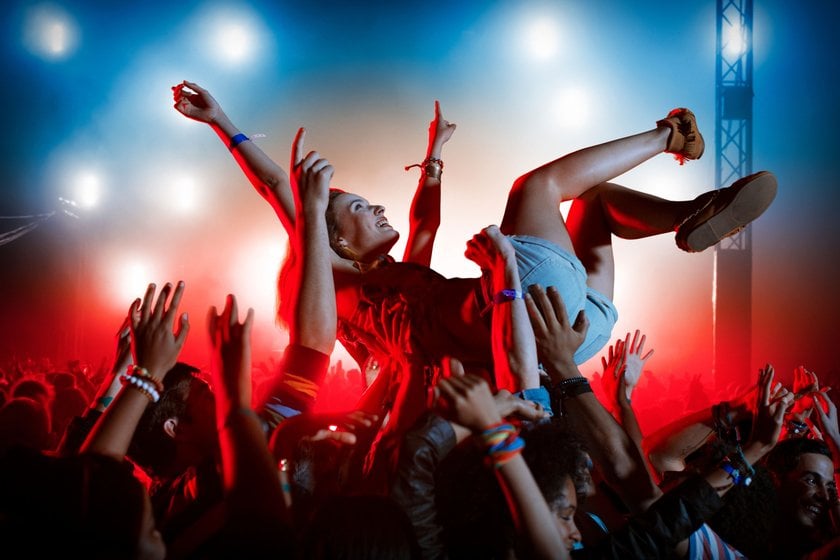
Earnings in rock concert photography depend on experience, location, and client base. New obtain $20-$25 hourly rate to cover small venues alongside freelance media work. A photographer at entry-level earns around $39,000 yearly in their first year, and then they can expect substantial raises based on their work experience. Those professionals who work with big bands and agencies receive an income above $66,300.
Your AI-Powered Photo Editor for MacOS and Windows
Discover Now!To increase their earnings, photographers need to expand their income generation methods through photograph print sales, image licensing, and exclusive fan-oriented service packages. Career success depends on your networking abilities. Developing relationships with promoters, bands, and publications leads to expensive show opportunities. The essential element for winning premium clients through portfolio promotion includes displaying live stage shots, vivid crowd energy, and emotional artist expressions. Investing in advanced equipment while mastering night-time photography makes a photographer stand out among competitors.
Editing Concert Photography

The ability to transform show pictures starts after the performance ends since specialized editing becomes essential for image improvement. These guidelines will help you transform your images into better versions:
Start with the basics. The first step should be adjusting exposure with contrast and white balance because they form the essential base for more advanced post-processing. Pay close attention to your camera settings for the concert to capture the best lighting and mood during the performance.
Reduce noise. Apply noise reduction tools but restrict their use to preserve images with their natural appearance. Remember, concert photography settings like a wider aperture and higher ISO can help reduce this effect during the shoot.
Enhance colors. Make specific color tones more intense to capture the dramatic show of moonlight and infuse your images with more energy.
Experiment with black and white. For a seamless conversion, try converting your images to black and white. Converting to monochrome can emphasize emotion and give your photos a timeless feel.
Use advanced tools. The AI-controlled editing tools in Luminar Neo provide both automatic picture enhancements and manual control for adjusting colors together with a layer-subjects function.
The completion process in show photography lets you modify your images but maintain their authenticity toward the dynamic environment of live performances.
To conclude the article
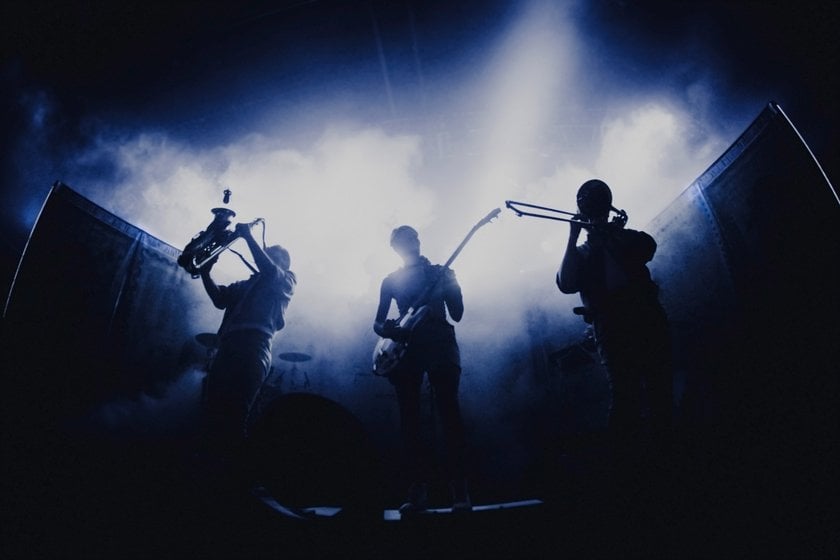
Achieving success in concert photography requires three essential elements: mastering technical skills, having proper equipment, and demonstrating determination. Mastering manual camera operations and learning to take photos in dim lighting conditions make it possible to record vibrant stage performances. Photographers can build their professional status by exhibiting local work while using social media for promotions. High-quality equipment investments, with professional editing tools, result in better image quality, which positions industry professionals above their competition in this competitive field. Professional concert photo editing and enhancement capabilities catalyze photographers to achieve better results in their work.


